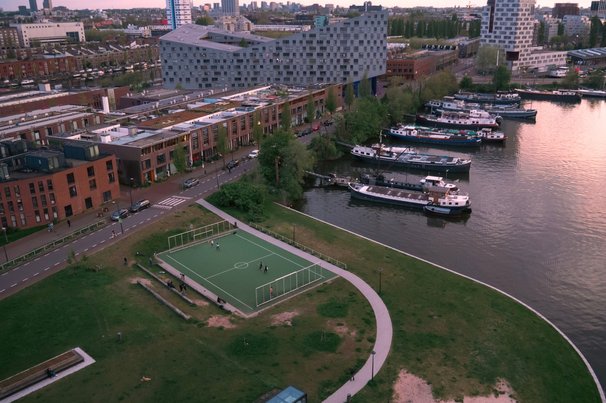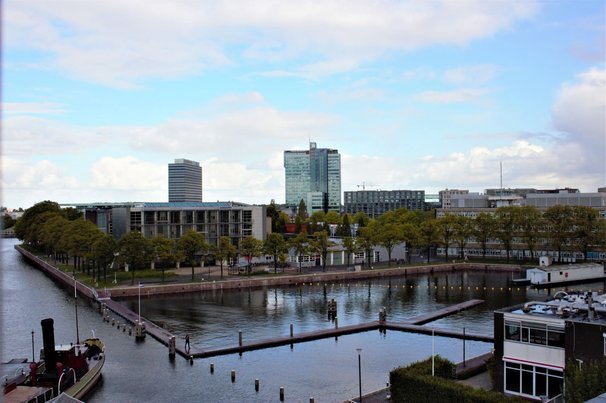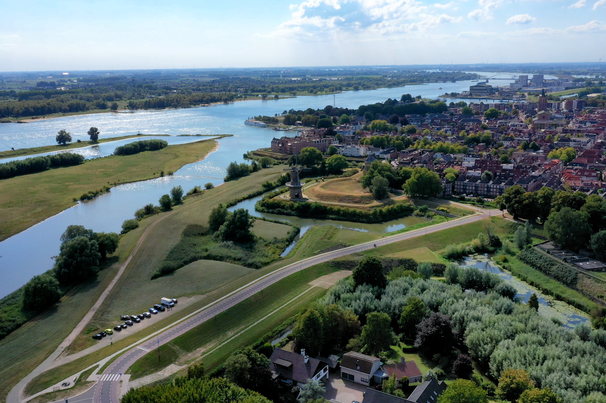10 februari 2014
8 minuten
Nieuws De speech van burgemeester Peter Noordanus op de eerste Cobbenhagen Summit, 30 januari 2014.
First of all I would like to thank Professor Glaeser and Mr Benschop for their excellent introductions. The relationship between urban and economic development is a highly essential topic. In my comment I would like to focus on the meaning of Mr Glaeser’s thoughts in ‘Triumph of the city’ for the spatial and economic development of Brabant as a European Region. In this context it is important to realize that, when viewed from a global perspective, a country like the Netherlands has no megacities, but only small and medium-sized ones. And that spatial planning policy in our country has always been designed to resist the strong trends of suburbanization. In the cultural tradition of the Brabant region, this canonical national spatial policy has always been subject to a less orthodox interpretation than in the more Protestant areas of our country. The result is that in Brabant compact cities merge with prosperous villages in an attractive, green environment. This process has not resulted in the extremely low-density suburbanization found in the USA, which Glaeser describes in his book. This is why especially in Brabant enormous opportunities for economic development are available just in an era when knowledge-intensive, high-tech economy brings new chances. The mosaic metropolis of Brabant, – Mr Pauli has already mentioned the term – the mix of green living and working environments and the short distances between the compact, urban cores gives here a competitive advantage. That is what I would like to speak about. If I may summarize the above in a spatial comparison: as a region we resemble Silicon Valley more than New York or Mumbai.
Mr Glaeser writes about the power of cities, yet there is also a second ‘driver’ for spatial economic development which is at least as important for the Brabant region. And that driver is the corridor development, which represents the spatial economic power of major transport axes, when it comes to attracting and accommodating economic activities. This is also an international phenomenon that has been researched extensively, and that plays an important role in the reality of Brabant’s metropolitan area – the reality of Brabantstad. The Rotterdam - Antwerp axis is such a corridor, as is the Amsterdam - Den Bosch - Eindhoven axis. The Rotterdam - Breda - Tilburg - Venlo corridor is for Brabantstad also of crucial importance more prominent. These corridors are more than just their underlying infrastructure; they are autonomous sources of power for spatial economic development.
I look to Brabantstad from these two angles, and as for the position of the cities is concerned I enjoyed reading Triumph of the city. Because the great thing about the Brabant metropolitan area is that five compact cities, which are very close together and surrounded by appealing living and working environments, can benefit directly from their collective strengths to be a region of true significance in the European context. The point is not only to recognize and enhance the autonomous power of the individual urban centres, but also to recognize the importance of the cities’ complementarity, and that by strengthening their coherence, the spatial economic strength of the region as a whole can also be enhanced. Tilburg unfortunately had no Jane Jacobs in the nineteen-sixties [1960s], and consequently cannot compete as a consumer city directly with places like Den Bosch or Breda that feature historical centres. On the other hand, Tilburg is a very successful student city thanks to its universities. Furthermore, as a place of business it is an appealing and relatively affordable blue-collar city that underwent a successful phase of industrial urban renewal in the nineteen-eighties [1980s]. And when it comes to the high-tech cluster in Eindhoven and the Brainport innovation concept, it is clear that Eindhoven and Helmond, located nearby and featuring an automotive campus, are a source of power to be reckoned with.
Following my reasoning, you will understand that the power of Brabantstad lies in increasing the complementarity and synergy between the urban economies. And thinking about the therefore necessary strategic approach I identify three important measures. First, transport connections in the region need to be improved, especially in the area of public transport. If Brabantstad is to thrive as one connected urban area and one single labour market, then we should once again take up the idea of Brabant Rail, which will give a tremendous impetus to the economic interaction between the cities. An additional argument in favour of Brabant Rail is the fact that the biggest opportunities for economic development in the Brabant metropolitan area in the near future are primarily to be found in the railway zones.
However, more needs to be done. It will take more than only improving regional public transport to strengthen the economy in a major urban area like Brabantstad. The daily urban system will receive a major impulse and will thus work better, but improving connections to the even larger corridor development mentioned previously are just as necessary. Growth in the logistics sector for instance – good for nearly twenty percent of the employment in Central Brabant – will require a mutual strategy for intensifying connections to Germany and Eastern Europe and for the extension of multi-modal transport alternatives. In essence, therefore, the accessibility strategy for Brabant must be two-fold. Both the internal and external accessibility needs to be improved. So above all, we must continue to lobby for rapid improvements to the A58 and A59 motorways.
I would now like to return to the cities themselves and to Brabantstad as an urban network, which brings me to the second necessary measure. The pursuit of complementarity between these cities is still on-going and is by no means complete. The Brabant European Capital of Culture project held the promise of enhancing not only the cultural profile of the individual cities, but also their diversity relative to each other. This is an important issue for a large urban area that is working to distinguish itself economically. I feel that we should continue the pursuit in this area. Just as it is equally important to develop a long-term vision on higher education in Brabant. With two research universities and four universities of applied science, Brabant has a lot to be proud of. But what is the true content of cooperation in higher education, and are the institutions in the various cities producing the right kinds of graduates to fit their individual economic profiles? I think we can still make tremendous advances in this regard. Tilburg University and Eindhoven University of Technology as our own Harvard / MIT? Or to put it in a more Brabant-specific context: what kinds of degree programmes are needed in higher education in cities like Breda and Den Bosch? What should our ambition be when it comes to cooperation between our research universities, and cooperation between our research universities and our universities of applied science? And why does a blue-collar city like Tilburg have such a limited range of options in higher technical education?
The vision on the future structure of higher education in Brabant also has to do with the third point that I would like to make in relation to Brabantstad’s further development. This concerns the necessary expansion of our innovation strategy. In terms of innovation, Brainport is already a strong trump card for Brabant. More intense cooperation with and between our educational institutions will also provide an opportunity to broaden our approach to innovation by adding their valorization activities to the mix. To broaden our approach by combining technical innovation with social innovation, and by focussing innovation more on major societal challenges – such as healthy aging and sustainability– that we are facing in Europe. Cities such as Bilbao and Vienna have already made steps in these approach of more inclusive innovation, and we can learn them.
Ladies and gentlemen, I would like to finish by saying this.
Small compact cities located just a short distance from each other in the middle of appealing, green living environments. A total population of over two million. This is a solid basis for a sufficiently strong spatial economic strategy. And then I am talking about significantly more than just urban densities and sky scrapers. The significance of Brabantstad lies precisely in the power of the urban mosaic. It’s perfectly fine if the entrepreneurs, government decision-makers, professors and so on make their contribution to the urban economy living in their homes in the suburbs, as long as urban vitality remains the driver of economic development. I once looked into the question where the researchers live who work here at our host Faculty today. Not surprisingly, they are overwhelmingly suburbanites. I am convinced that the power of Brabant’s cities lies precisely in the combination of city and surroundings. This is no endorsement for American-style suburbanization. Rather, it requires a well-thought-out mix of residential and working environments. Even in Brabantstad. An essential point here – and one that sets Dutch/Brabant cities apart from many of the cities that Glaeser describes – is that social exclusion and income segregation have been largely mitigated thanks to vigorous, decades-long efforts by the central government in the area of urban renewal and social programmes. Now that national programmes in this area have been terminated, Glaeser’s discussion of the actual development of megacities holds more relevance for us than ever: in the longer term, our region’s economic vitality requires a strong strategy in order to prevent social exclusion and here lies still a point of serious concern.
Cover: ‘2014.02.10_Triumph of the city_180’





